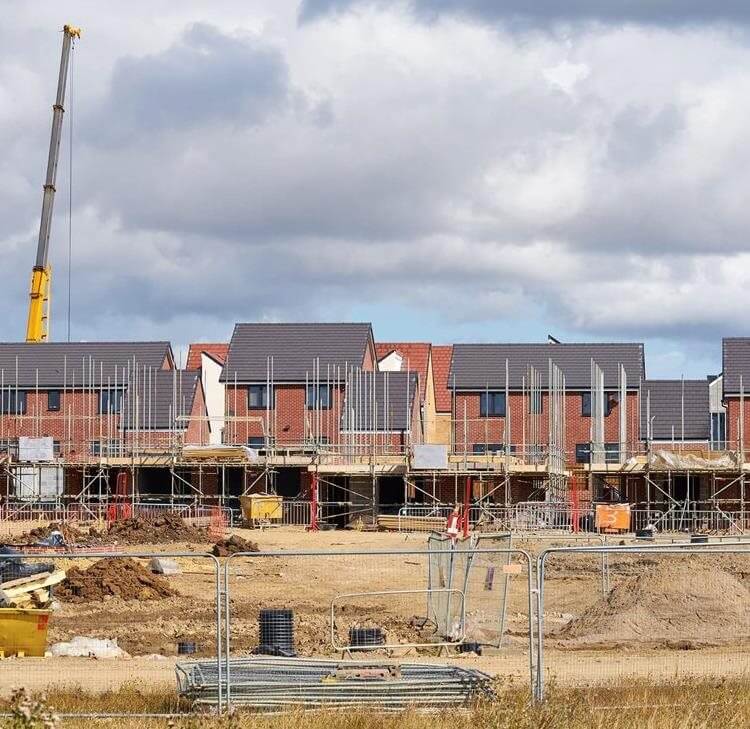The Subsidy Control Bill – Illustrative Guidance and Regulations – legal certainty vs flexibility
It has been a turbulent couple of years for those involved in subsidy control, and 2022 will be equally challenging. The Subsidy Control Bill (Bill) will take effect in 2022.
It has been a turbulent couple of years for those involved in subsidy control, and 2022 will be equally challenging. The Subsidy Control Bill (Bill) will take effect in 2022. It will form the backbone of the UK’s new subsidy control regime, but many commentators have raised questions over the transparency and efficacy of the new approach. Early drafts of illustrative guidance, illustrative regulations, policy statements and illustrative examples have just been published by the Government to show how three key areas of the new subsidy control regime will operate:
- The Subsidy Control Principles (Principles);
- Streamlined routes; and
- Subsidies or schemes of interest/particular interest.
Subsidy Control Principles
The Principles are broadly drafted, and our experience with the current interim regime has been that they can be difficult to interpret and apply, particularly at a sub-central level where the granting authority may not have sufficient oversight to determine what standard of evidence is required in order to demonstrate the subsidy’s compliance with the Principles. Clear guidance which directs a granting authority as to the evidence required to demonstrate compliance with the Principles would be extremely helpful here. This will be vital for smaller authorities which do not have the same resources to undertake economic appraisals as larger authorities, or government departments.
The Illustrative Guidance (Guidance) published by the Government is intended to give a sense of what the final guidance on the practical application of the Principles will be like, and it should be noted that it is subject to change.
The Guidance sets out a four-part framework (essentially a grouping of the Principles) for public authorities to use to ensure that a subsidy is consistent with the Principles. It confirms that the depth of analysis needs to be proportionate to the size and potential distortive impact of the subsidy or scheme in question. Where the subsidy is relatively lower in value or has very few potentially distortive features, it will require a less detailed analysis, whereas, more extensive analysis will be required for novel and contentious subsidies, and those with more distortive design features. This will be the case for Subsidies/Schemes of Interest or Subsidies/Schemes of Particular Interest for which there will be a separate Annex to the Guidance for granting authorities to consider - although this is not yet available. This approach is as anticipated, but the Guidance appears to require a detailed analysis even in the case of low value subsidies. It may be that this process is ‘short circuited’ for low value/less distortive subsidies by the establishment of streamlined subsidy schemes (see below).
The draft Guidance is currently incomplete, but it is clear that a significant effort will be required from public authorities applying the Principles. Much of this should be done as part of the granting authority’s business case in respect of a particular action in any event. However, the Guidance appears to require significant analysis of certain economic matters which are unlikely to be within easy reach of many sub-central authorities without seeking external support. Therefore, it appears that there is a risk that under the new UK regime, subsidies can be granted by authorities with imperfect information which may have distortive effects which were not anticipated, or which were disregarded in the pursuance of a particular objective.
How rigorously will the Principles be applied?
Public authorities have, of course, been used to applying the State aid rules, which give a fairly prescriptive route to determining whether a State aid exists and whether it can be granted lawfully or not. This was often a question for lawyers. However, as well as ensuring compliance with the legal process, public authorities now need to undertake a level of economic, policy and commercial analysis which was not previously required. While clearly some level of analysis in these areas has always been necessary for robust decision making, the Guidance appears to require a far higher standard of assessment. Although these are not questions of law, the involvement of legal teams may provide a stronger and more consistent approach. If decisions on compliance with the Principles are taken without legal support, there is a danger that wider issues (for example, relating to prohibited subsidies) and/or the Principles will be misinterpreted or not properly applied, and in these circumstances an authority may grant a subsidy unknowingly.
A less than rigorous approach can soon become institutionalised, and because the Competitions and Markets Authority (CMA) does not currently appear to be able to instigate an investigation into a subsidy on its own initiative, there is a risk that this type of issue goes undiscovered. This is compounded by the fact that subsidies which are given ‘unknowingly’ will not find their way onto the transparency database, and therefore, cannot be subject to scrutiny in that manner either.
Although significant discretion is afforded to granting authorities, the decision-making process must not become a ‘tick box exercise’, undermining the effectiveness and reliability of the new regime and putting authorities at risk of successful challenge.
Streamlined Subsidy Schemes/Streamlined Routes
Section 10 of the Bill provides a power for ministers to make ‘streamlined subsidy schemes’. The Policy Statement issued by the Government on Streamlined Routes (or Streamlined Subsidy Schemes as they are referred to in the Bill) provides that these are routes for public authorities to grant subsidies more quickly, where the subsidy is routine and low risk or aligned to UK priorities. These Streamlined Routes will be designed by the Department for Business, Energy & Industrial Strategy (BEIS), and some illustrative examples have been published for Heat Networks (Clean Heat) and Research, Development and Innovation (RD&I), although the Policy Statement suggests that other ‘clean heat’ and RD&I projects may be captured by these routes in future.
Subsidies awarded under a Streamlined Route will be exempt from referral to the CMA and cannot be subject to call-in – although they are still open to challenge by way of judicial review. However, the intention is that these subsidies have been pre-assessed as being compliant with the Subsidy Control regime, and so the risk of challenge may be lower (although that will of course depend on whether the Streamlined Route is properly designed and applied).
The Streamlined Routes appear to work in a manner similar to the General Block Exemption Regulation (GBER), in that there are specific parameters within which a subsidy may be granted. However, both illustrative schemes published appear to require further development before they could be used effectively.
If the Streamlined Route approach is delivered effectively, it would provide much needed certainty for granting authorities, enabling them to make subsidies quickly and efficiently within certain parameters. This assumes the conditions imposed are sufficiently user-friendly to enable sub-central authorities to confidently apply them. Care will be needed to ensure any conditions do not require granting authorities to undertake a disproportionate level of assessment, otherwise the streamlined subsidies may be no quicker than applying the Principles.
Subsidies/Subsidy Schemes of Interest and of Particular Interest
The Policy Note on Subsidies and Schemes of Interest and Particular Interest provides that granting authorities intending to grant subsidies or schemes of interest will have the option to make a voluntary referral to the CMA for assessment of their subsidy prior to award. Whether a subsidy will be a subsidy of interest will be defined by regulation, but the recently published policy notes provide that subsidies over a certain value threshold, or with certain design features (not yet confirmed), or subsidies for rescuing an ailing or insolvent enterprise (or certain other subsidies of a similar nature which are subject to restrictions under the Bill) will fall into this category.
If the criteria for a subsidy to be a subsidy of interest are not clearly defined and limited, there is a risk that the CMA may become overly burdened by public authorities seeking the CMA’s views. Legal certainty is very important to public authorities and many funding recipients, and in the absence of clear rules and guidance, there is a real risk that referrals to the CMA will become a matter of course when granting a subsidy which falls within this category. Clear guidance for application of the new regime has been promised but is still clearly a work in progress.
Some subsidies (those ‘of particular interest’) must be subject to scrutiny by the CMA before they are made. A subsidy of particular interest will be defined by regulations, but the policy note says that these will be subsidies concerning a ‘sensitive sector’ in excess of a particular value threshold, all subsidies (regardless of sector) over a certain value threshold, and all subsidies for restructuring ailing or insolvent enterprises, which are subject to additional requirements in the Bill. These subsidies are subject to mandatory referral to the CMA because they are more likely to pose a substantial risk of negative effects on domestic competition and investment or international trade.
The approach taken in the Bill and the regulations made under it may have a significant impact on the way that the subsidy regime works. If a risk-averse approach is taken, then a significant number of subsidies may require prior consideration by the CMA before they can be granted. On one hand, this may diminish the perceived flexibilities gained by allowing public bodies to take their own decision as to whether a subsidy complies with the new regime and slow down the granting of subsidies, but conversely, it may offer authorities the certainty they are looking for when granting higher risk subsidies.
Final comments
A recurring theme for subsidy control is balancing flexibility with certainty. Given the Government’s stated desire to maintain a level playing field and the need to comply with international subsidy commitments, subsidies must be justifiable and balanced against any negative consequences. Government will need to ensure its expectations for the level of analysis required by public authorities are proportionate and realistic, otherwise it may find many authorities relying on streamlined subsidy schemes rather than taking advantage of the flexibility offered under the new regime. The extent to which this is a problem will depend on the breadth and depth of the streamlined subsidy schemes of course.
The illustrative documents published by the Government are still in very early form, and in many cases will require significant development before they can be used by granting authorities. It is clear that the Government is seeking to provide clarity, but much of the essential detail is still missing from the published documents, and it remains to be seen whether the right balance is struck between giving much desired legal certainty, and ensuring that authorities have the confidence and flexibility to take full advantage of the new regime.
While the early publication of draft indicative guidance and regulations is welcomed, there is still a lot of work to be done in ensuring that these provide the clarity and certainty needed for public authorities to confidently provide subsidies in accordance with the new regime.
Authors
Angelica Hymers | angelica.hymers@brownejacobson.com
Senior Associate, Angelica works across Browne Jacobson’s Government & Infrastructure practice. Angelica specialises in subsidy control, state aid and public procurements.
Alex Kynoch | alex.kynoch@brownejacobson.com
Legal Director, Alex heads up the subsidy control team which is part of the firm’s Government & Infrastructure practice. Alex specialises in public procurement, subsidy control and complex public sector commercial projects, with a particular interest in regeneration and energy projects. He regularly provides training sessions to local and central government departments and speaks at seminars on subsidy control and public procurement.
This was first published on Local Gov on 8th March 2022.
Contact

Angelica Hymers
Principal Associate
angelica.hymers@brownejacobson.com
+44 (0)115 976 6092








































